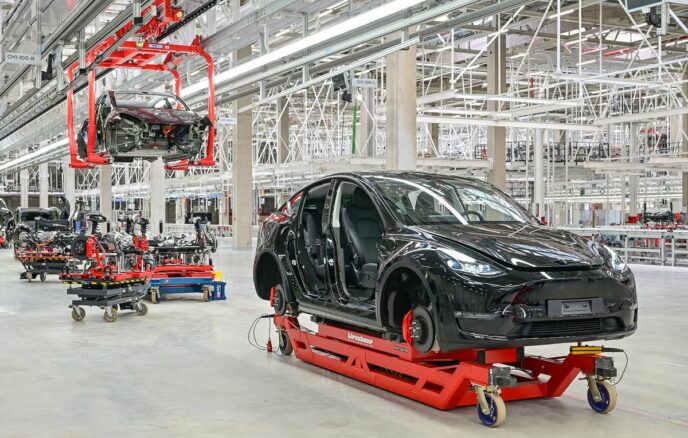
Tesla is in the midst of upgrading its production facilities around the world. Overnight it confirmed that it plans to spend US$6b this year and US$8b over the following two years on ramping up production output at its new plants in Texas and Berlin.
This decision follows a comprehensive update to the company’s GigaFactory in Shanghai, China.
A portion of this update has been completed. While Tesla has been coy on some of the details, Chinese reporting states that the updates mean the factory will be able to produce 2000 Tesla Model Ys a day.
A similar update to the factory’s Model 3 production line is set to be completed on August 7. Once done, it’s been reported that the factory will be able to produce 1200 Model 3s a day.
In both the case of Model Y output and Model 3 output, these figures reportedly represent a 30% rise relative to what the Shanghai GigaFactory has been rated for in the past.
“Tesla had to suffer some losses in production for the upgrades, but a 30 per cent capacity increase can hugely boost its output in the remaining year,” Gao Shen, an independent analyst based in Shanghai, told the South China Morning Post.
“It will ramp up production in the next few months to regain its front-runner’s position in the global EV [electric vehicle] market.”
The likes of Australia and New Zealand are expected to be core benefactors of these changes. Both nations get most of their supply of Model 3s and Model Ys from China.
Both markets have also suffered from delivery delays in the recent past, too; a consequence of Shanghai’s recent COVID-19 flare-up and subsequent tightening up of regulations.
In New Zealand’s case, this has resulted in Tesla deliveries being heavily delayed. The Model 3, which had become a frequent face in the domestic top 10 most popular vehicle list, has been absent for months.
In Australia, 4481 Tesla Model 3s were delivered to customers in the first half of 2022; signalling a likely decline over the course of the full year when compared to 2021. A total of 12,094 were delivered in Australia last year.
In New Zealand meanwhile, the Model 3 has only enjoyed two months of significant registration data in 2022 so far. These months were February and March, where 351 and 949 Model 3s were registered locally respectively. Across January, April, May, and June, just a mere four Model 3s were registered.
In spite of this, the Model 3 remains the most popular electric vehicle on both sides of the Tasman. And if the brand can shore up production outputs for both it and the Model Y (a nameplate that has the potential to be even more popular), then we could see Tesla return to the pointy end of the market.








